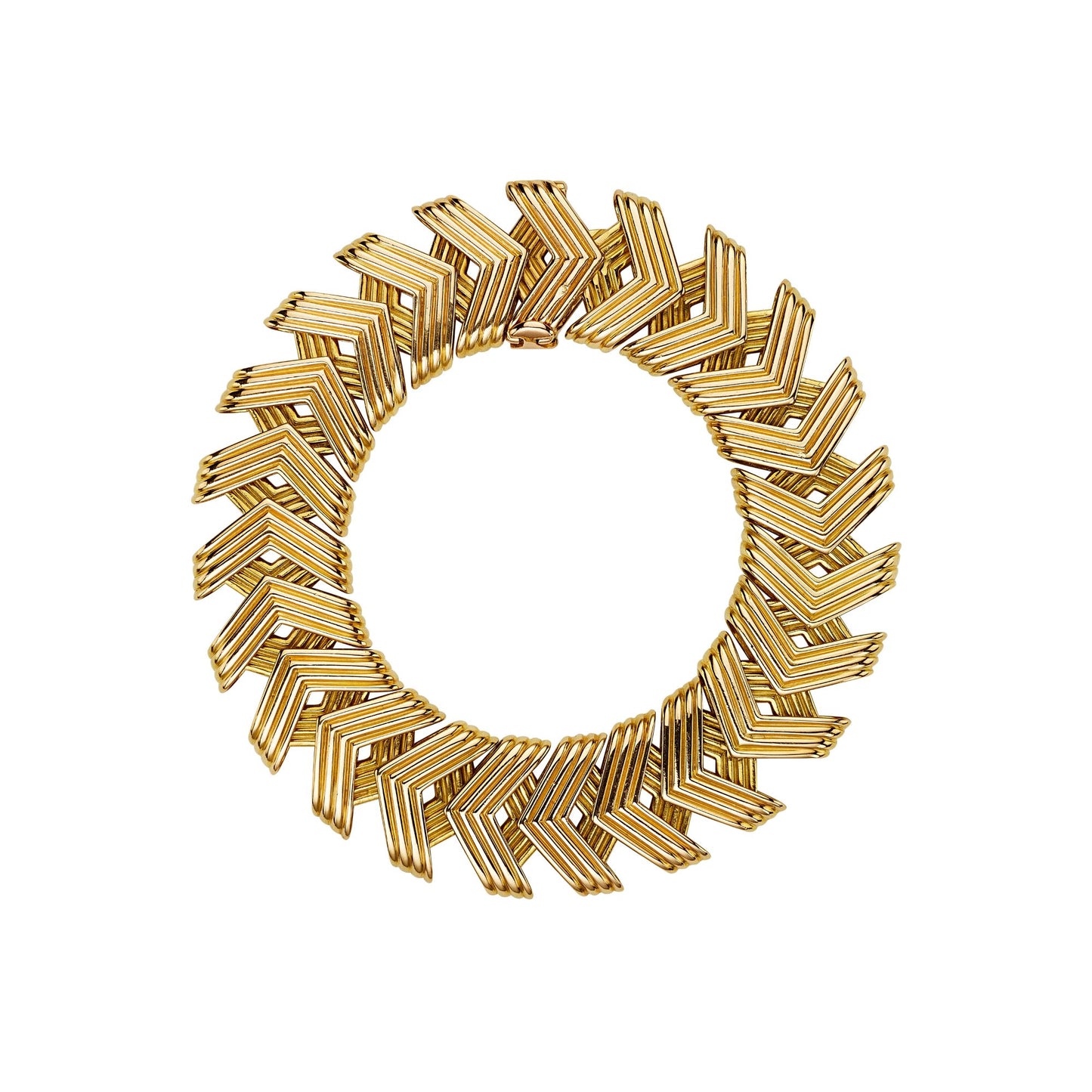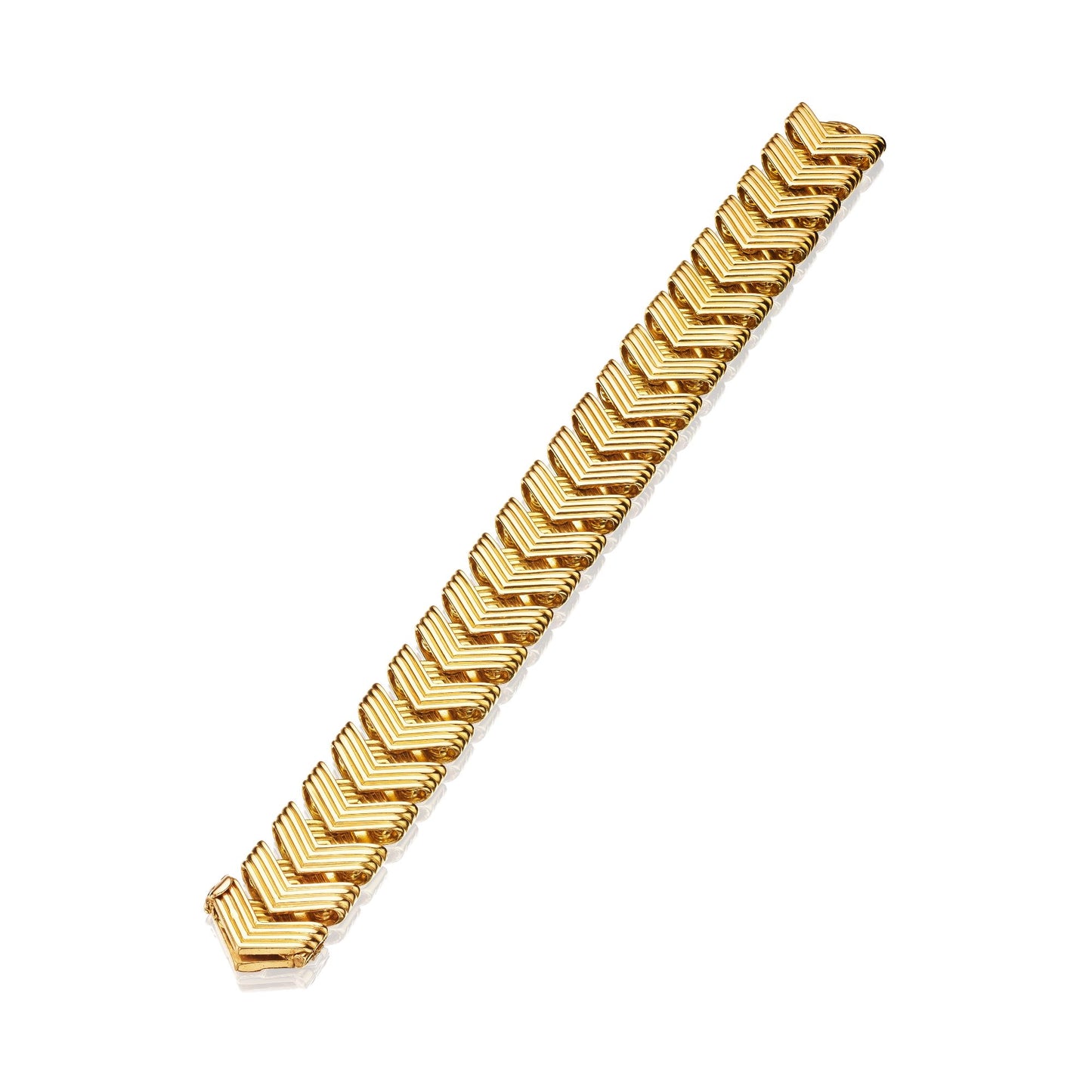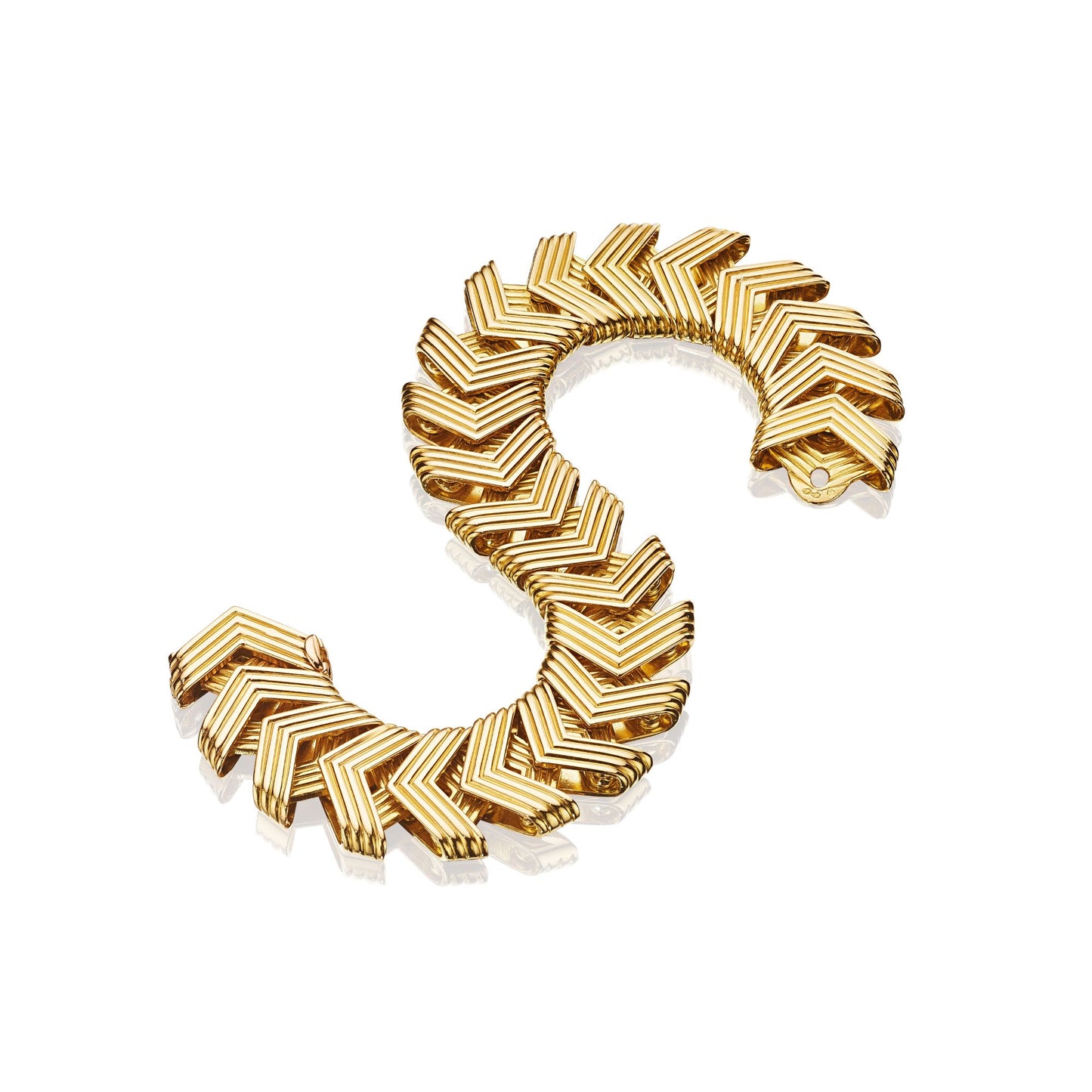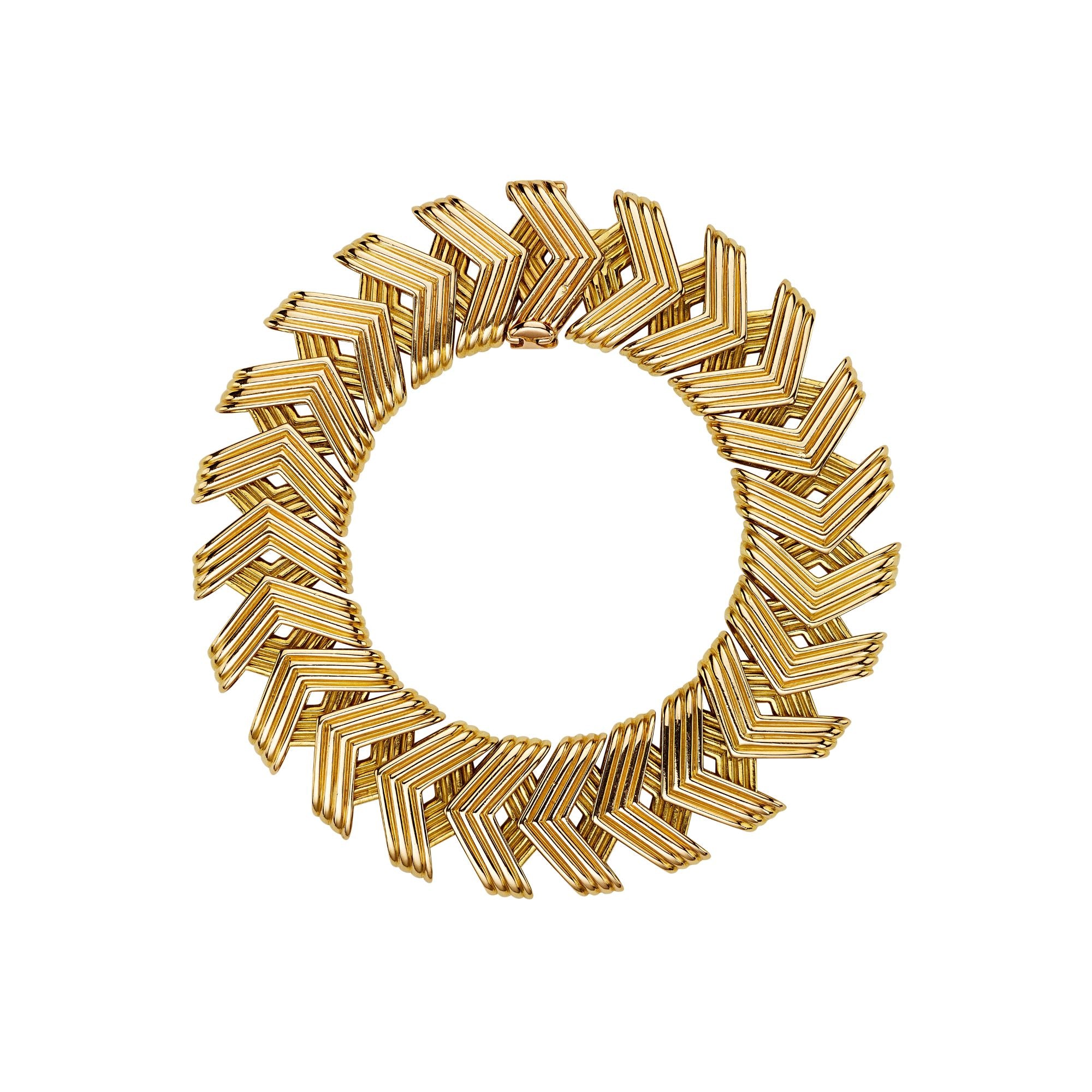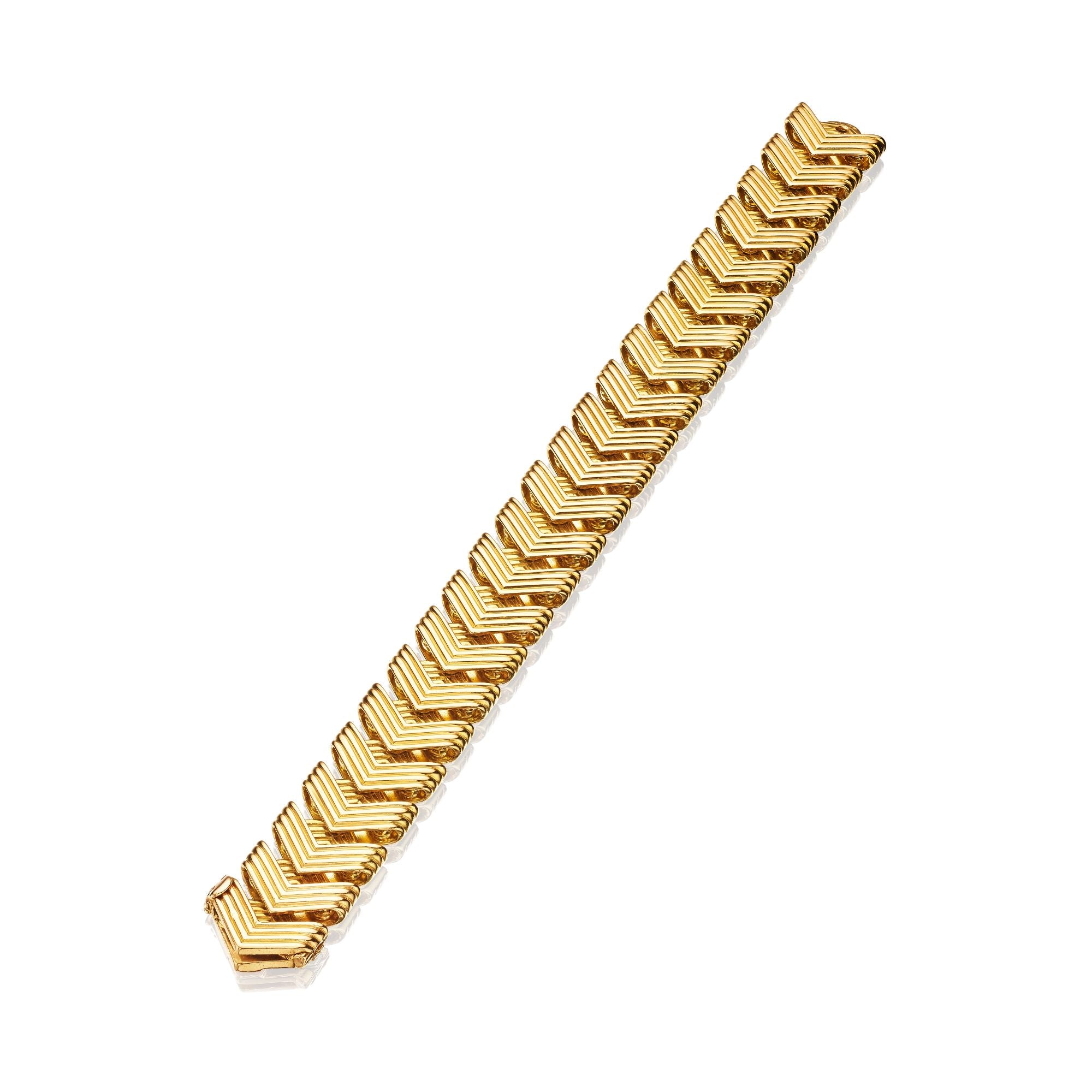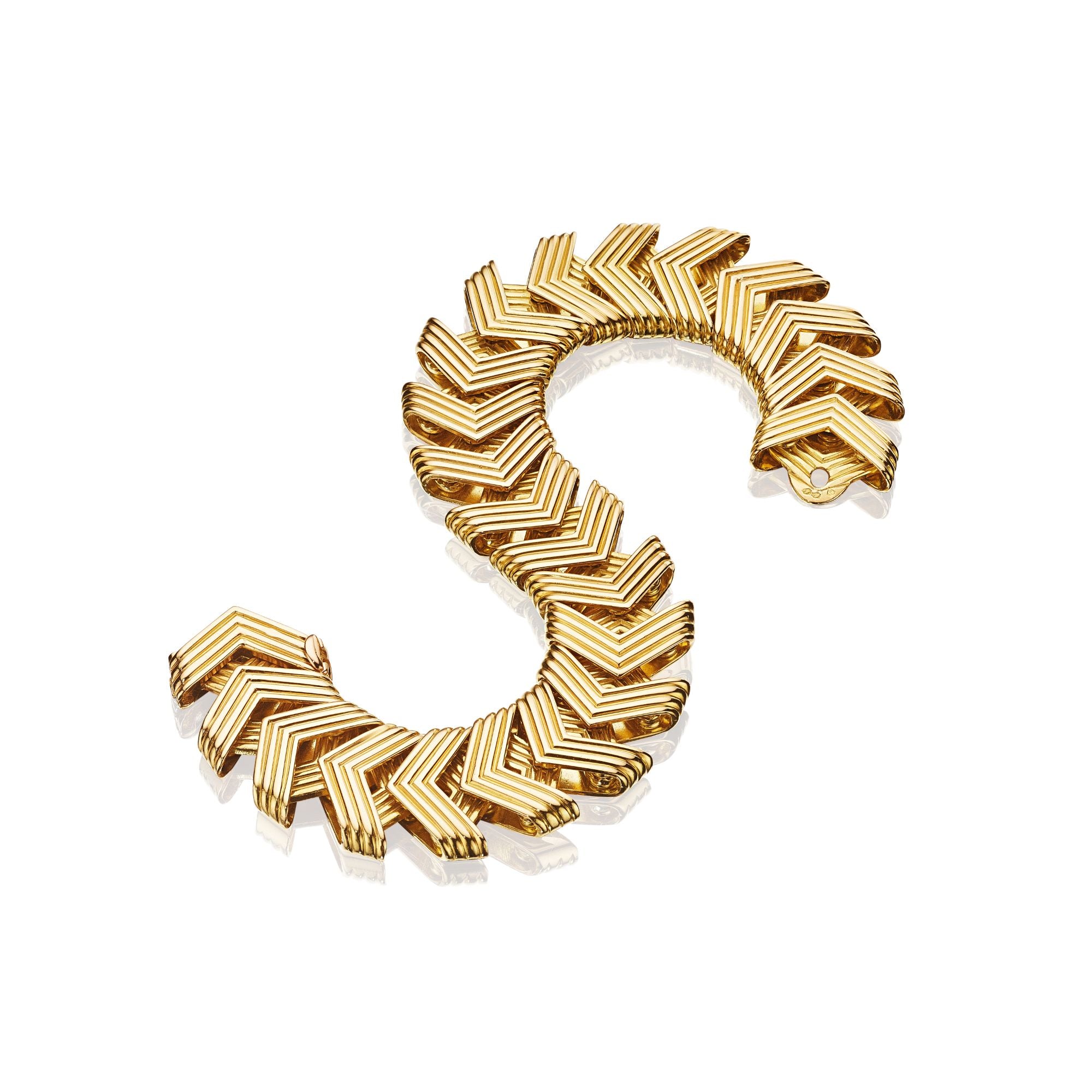GOLD CHEVRON BRACELET BY VAN CLEEF & ARPELS, PARIS, CIRCA 1950, MANUFACTURED BY JACQUES LENFANT OF GEORGES LENFANT
GOLD CHEVRON BRACELET BY VAN CLEEF & ARPELS, PARIS, CIRCA 1950, MANUFACTURED BY JACQUES LENFANT OF GEORGES LENFANT
SOLD
A bracelet composed of openwork chevron links that reverse direction on the obverse; mounted in 18-karat yellow gold, with French assay marks
- Signed Van Cleef et Arpels 64256, maker’s mark for Georges Lenfant
- Measurements: 7 3/8 x 5/8 inches (with two additional links)
Additional cataloguing
Biography
Van Cleef & Arpels was founded in 1906 by Alfred Van Cleef and his two brothers-in-law, Charles and Julian Arpels, at 22 Place Vendôme, Paris. Their important design innovations include the invisible setting, the minaudière and the Zip necklace. In 1939, they opened an office in Rockefeller Center in New York, moving three years later to 744 Fifth Avenue where they are today. Their impressive client list includes royalty, socialites, and Hollywood stars such as Jackie Kennedy, Princess Grace, Liz Taylor, and the Duchess of Windsor. In 1999, Van Cleef & Arpels became part of the Richemont Group. They have locations in the Americas, Europe, and Asia.
Significance
During the 1950s the gold bracelet became an important wardrobe staple. The privation of the years during World War II meant that jewelers had to innovate with the materials they had on hand, platinum was not obtainable, and stones were difficult to get. The finest houses rose to the challenge, and Van Cleef & Arpels entered the 1950s with innovative new designs in gold that were wearable for any occasion. A well-designed gold bracelet was worth an investment. For this bracelet, they turned to the most important maker of gold pieces, the Lenfant workshop.
From the 1950s to the 1970s, Jacques Lenfant created superb goldwork, with each necklace and bracelet more complex than the last. He was highly sought-after by the great French houses including Cartier, Hermes, and Van Cleef & Arpels. His work explored movement and texture and this bracelet is impressive for the clever use of negative space. Lenfant loved to explore chevron and “vé” shapes. This bracelet is composed of chevron-shaped links that are open in the middle and reverse direction on the obverse. The sections are then set into each other like an exquisite puzzle. Fluting on the polished gold adds texture. The resulting bracelet is exceptionally fluid and a joy to wear.
Lenfant looked at chains as a “harmony of sounds, shapes and textures” as he wrote in his book Le livre de la chaîne. He referred to the “rustle of rolling parts, which slide against each other [like] chain bells” and said that jewels should be “in every gesture of life.” By considering the construction of chains from all the senses, Lenfant created masterpieces, as shown by this exquisite bracelet, a rare and desirable addition to any collection.
